Thank you baby girl!
Heaters arenatural and synthetic.
Synthetic:
Manufacturers, most often, indicate in the instructions for the product: "insulation - 100% polyester" (very rarely specifying which synthetic insulation).
Sintepon - polyester fibers. The adhesion of fibers to each other can be carried out in two ways: gluing and thermal bonding. Glue synthetic winterizer is not environmentally friendly due to the use of glue, it quickly deforms and “cakes” under loads and washing, it has a lot of weight, low thermal insulation ability and air permeability. Currently, it is practically not used in the production of children's clothing; it can be found only in the cheapest products.
Thermally bonded synthetic winterizer is environmentally friendly and hypoallergenic.
The synthetic winterizer is durable, but not suitable for cold winters. Therefore, synthetic winterizer-based models are more suitable for the off-season. In jackets with padding polyester, the child will be comfortable only at a temperature not exceeding -10 ° C.
The synthetic winterizer can have a density of 50 to 600 gr. per square meter. In clothes, one layer of synthetic winterizer or several can be used.
The thickness of the synthetic winterizer is designed for different temperatures:
100 gr - this is autumn / spring - from about 0 ... + 5 to + 15 ...;
250 gr is a demi-season - from +10 to -5 approximately.
300-350 - cold winter, up to about -25.
Hollowfiber, polyfiber, fiberskin, fibertec.
Such synthetic insulation consists of fibers that are in the form of springs or balls. These components contain cavities, so products with such insulation keep their shape well.
The advantages of holofiber include high thermal protection, environmental friendliness, dimensional stability due to the springy structure of the fibers. Holofiber does not absorb moisture at all and breathes well.
Such a children's overall that can withstand frosts down to -25 °.
Isosoft (ISOSOFT) - a modern synthetic insulation with a thermally sealed surface, made from fibers in the form of balls. The balls do not communicate with each other and contain cavities, which is why the product on isosoft keeps its shape and heat well. The special microcellular structure does not allow cold air to penetrate inside, keeping warm. Isosoft clothing creates an ideal microclimate around the body, depending on the activity of the child and the weather. Possess high heat-shielding properties. Winter clothes on isosoft can withstand temperatures of -25C.
40-70 g/sq.m. – warm autumn-spring;
100-150 g/sq.m. - cold autumn-spring, warm winter;
200-300 g/sq.m. - frosty winter.
Thinsulate (Thinsulate) considered one of the best synthetic insulation. Permissible temperature regime for thinsulate: up to -30°
Thinsulate insulation consists of unique microfibers, which are 50 to 70 times thinner than a human hair, their diameter is from 2 to 10 microns. Around each fiber is a layer of air. The thinner the fibers, the more heat-insulating layers in clothing. This makes Thinsulate™ insulation 2 times warmer than the warmest down.
Even more modern heaters based on tinsuleyna Hollofil (Hollofil), Quallowfill (Qualofil), and Polarguard (Polargvard).
Hollofan is a weave of helical hollow fibers forming a strong springy structure. This allows the product to retain its shape for a long time and easily restore it. In terms of heat-shielding properties, Holofan is as close as possible to natural down, but unlike down products, it is easy to wash, does not absorb moisture and odors, does not cause allergies, and is also able to retain the heat generated by our body, but not “evaporate” it during prolonged use .
Hollofan is a new generation insulation.
Topsfil - ultralight high-tech modern insulation. Provides free air circulation, thanks to it the children's clothes "breathe".
Natural heaters
Natural down In down jackets and coats, the percentage of down and feathers is very important. In a good down jacket, it is from 60% / 40% to 80% / 20%, where the first number is the amount of down. There is no such thing as 100% fluff.
Down fibers are very mobile, which exclude the possibility of down "climb" to the surface. All seams of down clothing also undergo special processing.
It should also be taken into account that fluff is an allergen and an excellent breeding ground for ticks, so its antibacterial treatment is very important. Also, one of the main disadvantages of down can be attributed to its ability to absorb moisture and certain difficulties in washing.
Children's winter overalls with eider down, designed for walking in perceptible frosts. Goose down is also good. Duck down as a heater is best suited for demi-season clothing. Down clothing is best worn in areas with a dry frosty climate, but in non-frosty, wet winters, down children's clothing can contribute to the greenhouse effect and the child may overheat.
Sheepskin or wool The advantages of this material include its durability, hypoallergenicity and wear resistance. Wool holds heat well, but at the same time it absorbs moisture well and has a lot of weight.
Excellent heat retention down to -25°.
Types of material of the top layer of winter clothing
Teflon®
Provides fabrics with excellent water-repellent and stain-resistant properties, as well as protection against splashes and dirt. The Teflon® finish is colorless, odorless and undetectable to the touch. Clothing made of fabric with Teflon ® finish does not lose its ability to "breathe"; wash resistant.
Cordura
Cordura is a high strength polyamide designed for extremely harsh environments. The surface of the fabric is protected by a double treatment with Teflon. The Cordura material is completely waterproof. Water resistance - 9700 mm, wear resistance - 11600 revolutions (Stoll). Cordura inserts on the knees and buttocks of overalls and trousers greatly increase the strength and water resistance of clothing in places of greatest risk.
Oxford
This is a durable fabric made of chemical fibers (nylon or polyester) of a certain structure that provide water resistance to the fabric. The fabric is water repellent.
Nylon oxford has high strength, elasticity, resistance to abrasion, repeated bending and chemical action. reagents.
Polyester oxford is somewhat inferior in strength and chemical resistance to nylon, but surpasses it in heat and light resistance. A variation of Oxford, oxfordrip-stop, is a fabric with a profiled thread, which gives the fabric an improved textured look and greater strength. There are one-colored and camouflage fabrics.
Mini-Faille™ is a tough and durable fabric that uses an Omni-TechCeramic™ coating to withstand long-term friction.
Omni-Dry™ Nylon is a soft, cotton-like fabric. Provides good breath. Used in clothing for hiking, incl. and on foot.
Omni-Dry™ Pique and Jersey - 100% polyester, lightly brushed for a more cotton-like feel. The fabric breathes, does not “roll up”, almost does not wrinkle, and inhibits the growth of bacteria. Used in clothes for hiking, street training.
Dura-Trek™ Canvas is a rugged nylon fabric with Omni-Dry™ technology. Used in clothes for hiking, mountaineering, i.e. where increased wear resistance is required.
HydroPlus™ - the base is NylonTaffeta, with all its advantages and disadvantages, however, it has an additional coating of polyurethane, which makes it well protected from wind and rain, but the ability to breathe naturally suffers from this. All seams are finished.
HydroPlus 3000™ is the same but with a thicker layer of polyurethane.
PerfectaCloth™ - the basis is Tactel®. There are two varieties: coated (for demi-season clothing) and uncoated (preferably for summer).
PVC ™ - the basis is NylonTaffeta, which was filled with polyvinyl chloride. All seams are finished. Raincoats, raincoats, etc.
Aqua Control
Water resistance: 3000mm water column, water resistance starts at 3000mm. Windproof: breathability 0 l/m2s
Water and dirt repellency: DWR treatment
The fabric is designed specifically for clothing used in rainy, slushy weather. It is not afraid of dirt and practically does not let water through, products made from it are waterproof, durable and warm.
Active
Water resistance: 5000mm water column, water resistance starts at 3000mm.
Breathability: vapor permeability 4000 g/m2/24h
Windproof: breathability 0 l/m2s
Water and dirt repellency: DWR treated.
Beavernylon is a two-layer fabric developed by Norwegian specialists. Durable polyamide on the surface guarantees high wear resistance of the garment. The cotton underside of the fabric increases elasticity and makes the garment comfortable. It is the double layering that makes this material so warm. By treating the fabric with Fluorcarbon, the garments are water-resistant, dirt-repellent and breathable. Beavernylon is used in the production of children's winter overalls and is combined with materials such as HemiProof and CORDURA.
HemiProof is a two-layer material developed by Swedish specialists. Durable polyamide on the surface of the fabric repels water, wind and dirt. The reverse side of the fabric is laminated with a dense layer of polyvinyl. This guarantees complete water tightness of the material. HemyProof inserts on the knees and buttocks increase durability and water resistance in high-risk areas.
HemiTec is a windproof, stain-resistant polyamide treated on the reverse side with microporous polyurethane. It does not let water in, but allows moisture to pass from the body to the outside.
Water resistance - 2000 mm, breathability - 3000 g / m 2 / 24 hours.
PolarTwill is a combination of elastic polyamide on the upper side of the fabric and cotton on the inside. This combination makes the material very durable and at the same time soft and comfortable. It uses a Fluorcarbon (fluorocarbon) coating that repels water and dirt. After washing, these functions of the fabric are self-repairing.
The membrane is a thin film that is laminated (welded or glued using a special technology) to the upper fabric or a special impregnation applied on top of the fabric.
From the inside, the film or impregnation can be protected by an additional layer of fabric.
The membranes have a structure in the form of a film with very small pores. Therefore, a drop of water simply does not pass through them. Membrane baby overalls are waterproof and breathable.
The membrane helps to wick away moisture, preventing the body from sweating and cooling. Another point: the membrane "works" only when moving. Overalls on a clean membrane without insulation will not warm a sedentary child, it will only protect against external moisture.
The younger and more passive the child (jogging + stroller), the more insulation should be in winter clothes in addition to the membrane (at least 200 g). And, perhaps, the most important thing: when moving, membrane clothing creates a microclimate around the body equal to about 32 degrees. And it maintains it at any temperature overboard (hot or cold). Do not be afraid if the child is a little cool under the clothes - this is the required 32 degrees.
It is not recommended to wear overalls with one membrane on long walks at temperatures below -15 ° and during snowfalls, since the membrane will freeze and stop “breathing”. Caring for membrane baby overalls is washing only with special powders, the impossibility of using bleach or powder with bleach, manual spinning is desirable, ironing is prohibited.
Three layers of clothing are used to best retain heat and ensure proper membrane function.
1. First bottom layer: underwear. It retains heat and removes excess moisture. People often ask if it is possible to leave cotton shorts and a T-shirt, the answer is: you can. But instead of a T-shirt, it is desirable, nevertheless, to put on a child a mixed T-shirt (turtleneck) with a long sleeve. And do not be afraid of synthetics. So that underwear (t-shirt + tights) covers the body as much as possible. Now on sale there are body-friendly options that do not irritate the skin and with a small percentage of synthetics. Desirable percentage: not less than 10%. If you wear 100% cotton, it will simply absorb moisture without taking it anywhere. Or buy thermal underwear that is worn directly on the naked body. There is even merino wool - it is gentle and suitable for baby's skin.
2. The second layer is put on at a temperature of -10, depending on the insulation in the clothes. If the product has a heater of at least 200 g, it is possible that the second layer will be required only at temperatures from -15. In most cases (if the clothes are of high quality), nothing cooler than a long-sleeved T-shirt is needed up to this temperature. You dressed the child correctly, the principle is observed - he does not freeze. So, it's getting colder - we put on the second layer, this is a fleece or wool underwear. It also retains heat and removes moisture further. Either you buy branded underwear, by the way, they are very comfortable and durable (stretch well, enough for two years).
Is it possible to use the usual "grandmother's" self-bonded suit under the membrane? After all, branded underwear is also made of wool ...
The fact is that branded merinos contain synthetics. Pure wool is hygroscopic, it gets wet. Order or buy a ready-made knitted suit with the addition of synthetics - wool pan, wool acrylic, acrylic, and the problem will be solved.
3. The third layer is the jumpsuit itself or the set. All! Do not need anything else.
________________________________________
How does the heater heat up?
The amount of insulation in a jacket should be about twice as much as in trousers.
The insulation in clothes is unevenly distributed: the torso is insulated thicker, the child’s arms are in motion - they are insulated very little, additional insulation goes to the buttocks, knees and shoulders.
________________________________________
How to determine if the baby is cold or not?
A kid is cold outside in winter if: he has cool hands, cheeks, nose, back. And overheating is indicated by a too warm or hot back, neck, hands, face. With the help of thermal underwear, the baby does not freeze in winter. But it should be worn only when the temperature outside is below -15C.
________________________________________
What is waterproof clothing
Waterproof clothing is characterized by the height of the water column (in millimeters), the pressure of which the fabric can withstand for a day without getting wet. How they check it: they stretch the fabric, launch a “column” of water from above and wait for reverse side tissue will appear drops. The higher the water column, the better. It may look like this: "coating with water protection of 3000 mm." You should not chase high performance if you are not in danger of conquering the Alpine mountains, that is, your family lives as usual. For example: a heavy urban downpour creates a pressure of 5000 to 8000 mm of water column. Normal rain (sleet) - 1000-2000 mm. If the jacket has a water resistance of no higher than 1500 mm, the child will still get home dry, but protection from 3000 mm will allow you to walk in the rain. Taped seams provide additional waterproofing.
What does the water column say:
1500-3000 mm is a common indicator for children's clothing with water protection. It will withstand light drizzle, sleet, but can get wet if the child likes to wallow in snowdrifts.
3000-5000 mm is a good indicator for waterproof clothing. Such water protection have, for example, tourist tents.
5000-10000 mm and above is an excellent indicator. Will withstand the entire range of wonders of the Ural winter, autumn and spring.
In addition to waterproof characteristics, there are "breathable" indicators. They depend on the amount of steam passed by the fabric over a certain period of time - for example, per day. The higher the vapor permeability index, the more vapors the fabric removes.
Good level of vapor barrier: not less than 5.000g/sq.m., the usual level is 3000g/sq.m. m/day
The issue becomes very relevant in the cold season, which is very long in our latitudes. And as they say, there is no bad weather - there are bad clothes. Therefore, we will not complain about the bad weather, but simply choose the right clothes for ourselves, in which it is comfortable not only to run from home to the nearest stop or store, but also to take a leisurely walk on a frosty day without freezing. And it will be exactly what is filled with jackets, down jackets, coats that will warm us. What are the heaters-fillers and which one to give preference to? Let's find out.
Currently, there are a considerable number of fillers for outerwear. All of them can be divided into natural and synthetic.
Natural heaters:
1. Down- natural insulation, which has lightness and excellent thermal insulation.
A feather is added to the composition in order to evenly distribute the fluff over the product.
Manufacturers always indicate the ratio of down and feather in the insulation. For example: a value of 85/15 indicates that it contains 85% pure down and 15% feather. The fine feather prevents down from settling and rolling into hard lumps.
The most valuable down is eiderdown, then goose down. The most budget option is duck down, winter clothes on such a heater are not intended for severe frosts.
From shortcomings of such a heater, a possible allergic reaction should be noted, as well as the difficulty in caring for the product, since after washing the filler still forms lumps.
2. Wool and fur- natural material 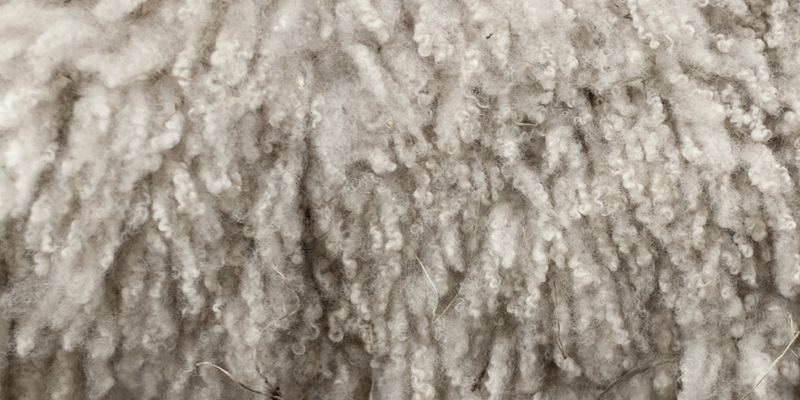 which is often used as a lining for winter clothes. It has high warming properties.
which is often used as a lining for winter clothes. It has high warming properties.
New Zealand sheep wool is considered one of the highest quality materials for the production of excellent wool insulation for children's winter clothing.
From shortcomings high absorbency and rather considerable weight are noted.
3. Batting - half-woolen insulation, which in the days of the Soviet clothing industry was used in the tailoring of overalls, as well as insulation for winter coats.
- half-woolen insulation, which in the days of the Soviet clothing industry was used in the tailoring of overalls, as well as insulation for winter coats.
Currently, such a filler is becoming less and less popular.
From shortcomings It is worth noting the large weight and fairly high water-retaining properties.
Synthetic insulation:
1. Sintepon- one of the most 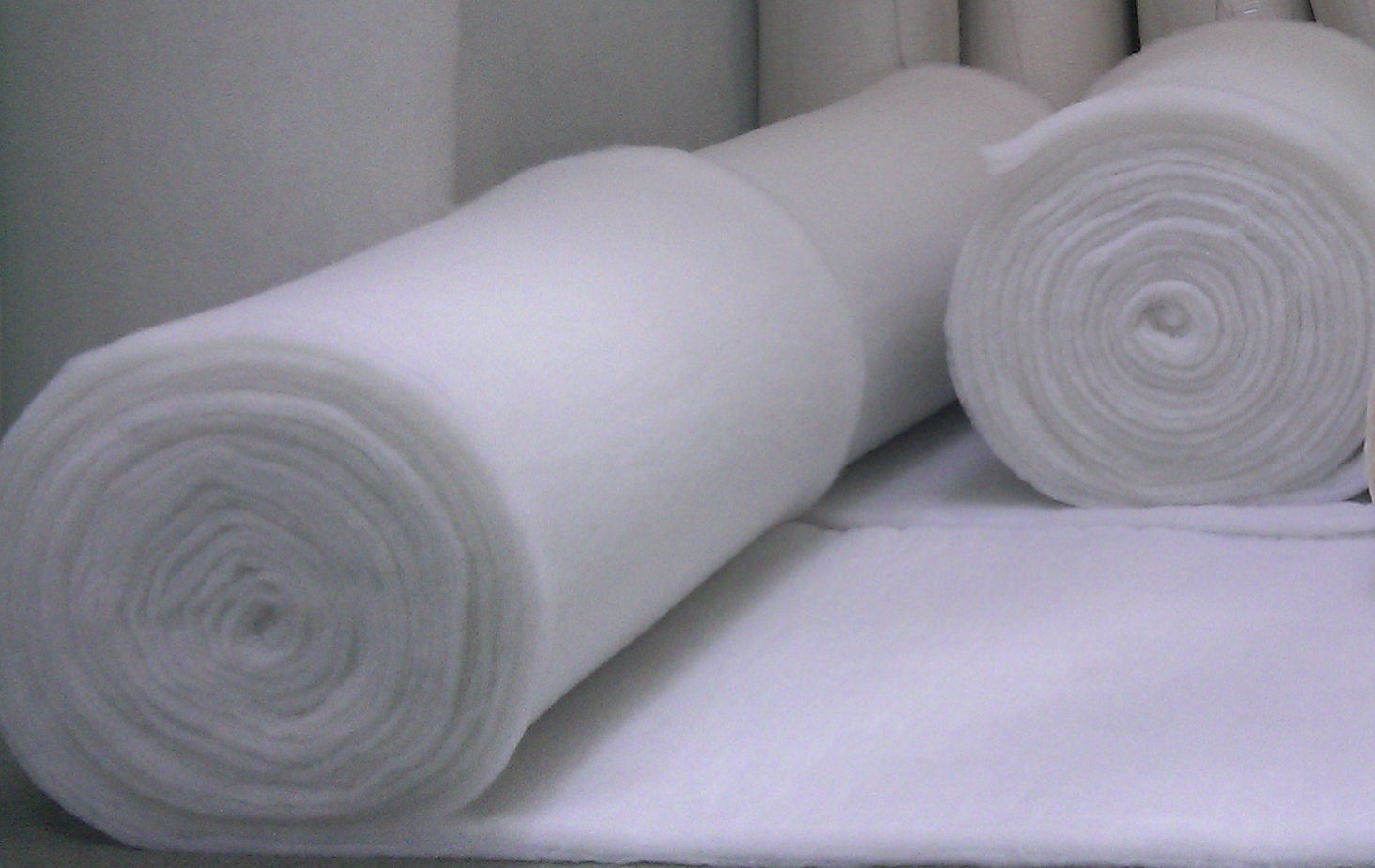 common synthetic insulation. Consists of polyester fibers bonded with adhesive, needle-punched or thermally bonded. Lightweight, warm, inexpensive insulation was at one time very popular.
common synthetic insulation. Consists of polyester fibers bonded with adhesive, needle-punched or thermally bonded. Lightweight, warm, inexpensive insulation was at one time very popular.
However, due to a number shortcomings: increased moisture permeability, airtightness (the body in it does not breathe and fogs up), rapid deformation and fragility of the filler - it was replaced by other, better materials.
Now the synthetic winterizer is used as a heater for the production of cheaper demi-season and winter clothes. During washing, this insulation crumples, gets off.
And for a cold winter, it is suitable for a maximum temperature of up to -10 °.
 2. Holofiber(hollow fiber) - non-woven fabric filled with synthetic fibers in the form of spirals, balls, springs, etc. This structure makes the thing warm, due to the fact that a lot of air is stored between the fibers.
2. Holofiber(hollow fiber) - non-woven fabric filled with synthetic fibers in the form of spirals, balls, springs, etc. This structure makes the thing warm, due to the fact that a lot of air is stored between the fibers.
This is a new generation heater. Lightweight, warm, moisture resistant, perfectly keeps its shape and hypoallergenic. An excellent material for the production of winter clothing insulation. Able to protect us from frost temperatures down to -25 degrees.
Varieties: polyfiber, thermofiber, fiberskin, fibertek, etc.
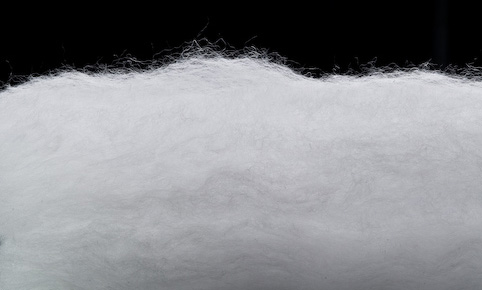 3. Thinsulate- one of the most expensive heaters. It is also called artificial down, due to its lightness and warming properties. But unlike fluff, thinsulate does not cause allergies and holds volume better without straying. It does not deform when washed, it is able to warm in frosts up to -30 degrees. Clothes on tinsulate are sewn for athletes, oil workers, climbers.
3. Thinsulate- one of the most expensive heaters. It is also called artificial down, due to its lightness and warming properties. But unlike fluff, thinsulate does not cause allergies and holds volume better without straying. It does not deform when washed, it is able to warm in frosts up to -30 degrees. Clothes on tinsulate are sewn for athletes, oil workers, climbers.
Thinsulate- this is the most effective insulation in terms of such important ratios as heat / thickness and heat / weight. It is lightweight and moisture resistant material, which has excellent thermal insulation properties. Thinsulate is the thinnest of the currently existing heaters used for the production of model clothes. When comparing layers of the same thickness, it is almost 2 times warmer.
Thinsulate is so effective that it can protect against frost up to -60 degrees. In addition, it provides increased comfort, and weighs very little. This heat-insulating material is functional, thanks to it you can create adjacent silhouettes of model clothes.
It should be noted that for a heat-insulating material it is important that it "breathe" well. - Thinsulate provides excellent ventilation. It is equally important that the thermal insulation material is machine washable. - Thinsulate also has this property, which makes it easy to care for. He is not afraid of repeated washings, wear-resistant. - You don’t have to worry that thinsulate will shrink, tear, break or somehow deform. This thermal insulation material is designed so that it does not migrate through the lining of the product and the outer fabric, thinsulate is homogeneous.
These are far from all the positive qualities of thinsulate: it is able to store heat even when wet, dries quickly. Thinsulate mimics everything best qualities, which has natural down, while thinsulate is devoid of such shortcomings as clumping during washing and allergy, in addition, with an equal thickness, it is one and a half to two times warmer. Thinsulate is an environmentally friendly material and has a European certificate.
Thinsulate has the thinnest fibers of all synthetic insulation, it is the most effective heat insulator in the world. This material was created specifically for outerwear. Thinsulate is the best-known insulating material on the world market today.
Sintepon- is a non-woven material, which is used in the production of a mixture of polyester fibers. It is worth noting that natural fibers, such as wool and cotton, are added to some types of synthetic winterizer. Between themselves, the fibers in the synthetic winterizer are fastened with a needle-punched, adhesive (emulsion) or thermal method. Needle-punched synthetic winterizer is made by mechanically interlacing fibers with additional fixation of multidirectional fibers with serrated needles. In the adhesive (emulsion) synthetic winterizer, the fibers bind special adhesives. And the fibers of the thermally bonded synthetic winterizer are connected under the influence of elevated temperatures.
The synthetic winterizer is soft, elastic, quite voluminous, but at the same time light material. It has excellent heat-shielding properties and low weight. The synthetic winterizer does not deform under repeated compression, it has good strength properties. It is moisture resistant, does not absorb water and dries quickly. Available in various densities and volumes. AT recent times synthetic winterizer sale is becoming more and more popular, and synthetic winterizer production technologies are constantly being improved.
fluff- a feather with a soft core and a weak development of the fan. Down has high strength, low thermal conductivity, hygroscopicity, lightness. The usual down feather is a short rod with a bunch of beards on top and has the shape of a brush. The length of the chin is small - less than 1 mm. The length of the vane part with the rod can reach 10-20 mm. The beards of fluffs have rays, the length of which is about 1 mm; the thickness of the down beards is about 5-7 microns, they are strong, flexible, resilient. All plumage of birds is divided into three types: flight, contour and down. In adult birds, the down is hidden under the contour feathers. incompatibility. Bird down is used for its "warmth without weight" property for thermal insulation in sleeping bags, blankets and jackets.
holofiber- This is a modern insulation and filler.
Composition: 100% polyester hollow structure.
Today, it is almost the most popular synthetic non-woven material.
Positive qualities of the material:
- serves for a sufficiently long period (more likely to get bored than demolished)
- non-toxic, therefore non-allergic
- does not absorb surrounding odors
- does not ignite
- easily takes any form, but always recovers
- strong enough
- does not crumble and does not climb in use
- retains heat very well
- repeated washing is allowed while maintaining the original qualities
- does not accumulate static electricity
As a separate advantage can be considered the fact that in 2010 it caused a lot of press noise by taking first places as "best fabric of the year" and so on.
Hollofiber is a synthetic non-woven material that is currently widely used for sewing clothes for the winter season. However, winters are different everywhere, so many people face the question: are holofiber jackets warm or not? And why else should you choose a model with holofiber insulation, and not, for example, the more familiar fluff.
Advantages of holofiber
Holofiber jacket - what is it? Such jackets are sewn from the same materials as down jackets, with the only difference being that synthetic material is used as insulation in the first version, and natural down in the second. Externally, the models can be absolutely identical. Many even mistakenly call holofiber jackets.
The advantage of holofiber as a filler is that it is cheaper than down. Without big expenses, you will get yourself a winter thing that can be worn for more than one season. Hollofiber can be easily machine washed, after the first wash it only shrinks a little, which does not affect its heat-saving qualities. Such a filler rarely causes allergies.
Another advantage of holofiber is a fairly long service life. Any fluff begins to fall off over time, and also crawl out through the fabric, and a jacket with artificial filling retains its original appearance. Although the top layer of these jackets is made waterproof, it is possible that you will be exposed to heavy rain or snow. Hollofiber is not afraid of such vagaries of the weather, it dries easily and takes its original shape.
Disadvantages of holofiber
It is better to decide which jacket is better: down or holofiber, after familiarizing yourself with the shortcomings of this material. The main disadvantage of a women's holofiber jacket compared to a down jacket is weaker protection from the cold. Natural down is the most the best insulation, which most reliably protects the body from freezing. Hollofiber is suitable for fairly low temperatures, but in extremely cold winter conditions, which is not uncommon for us, this filler may not protect and warm you enough. However, it should be noted that down in down jackets, especially of low quality, can fall off and form voids without insulation, and holofiber is always evenly distributed over the thing. That is why many note the warmth of such jackets and prefer them to downy options.
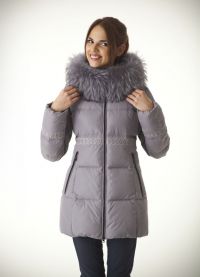 |
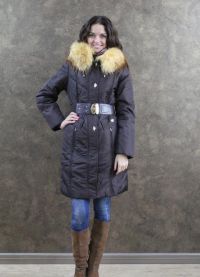 |
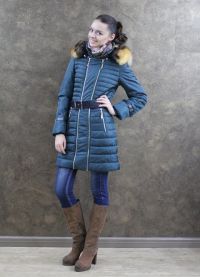 |
 |
With the onset of cold weather, the question of choice becomes relevant winter jacket or coat. A down jacket should be warm, comfortable and not very heavy - these qualities are important for both adults and children. What are the fillers for down jackets? What filler will be better to keep warm, will not wrinkle and will not fall off?
Down - a natural filler for down jackets and what it is
For many years, down was used to insulate jackets and coats, sometimes in combination with feathers. Despite the development of technology, it is still considered the warmest, highest quality and easiest to care for filler. Please note - only waterfowl down is suitable for down jackets due to its water-repellent property. This allows it not to stick together, not to let in moisture and cold, and also not to absorb sweat. Before becoming a filler, fluff undergoes mandatory preparation procedures to maintain its properties throughout its service life. Thus, it is pointless to stuff the jacket with down on your own - the quality of the insulation will be low. In addition, factory processing makes the down hypoallergenic.
It is believed that the best filler is eider down. It guarantees warmth and comfort even in severe frosts and is suitable for long walks. Duck and goose down is the most popular filler. It is soft, warm and will last you a very long time. Swan down can be seen on the label is extremely rare. But fluff mixed with feathers, on the contrary, is often found on the shelves - the feather reduces the cost of the product.
How to understand that a down jacket is of high quality?
- Firstly, down is always placed in “bags” for even distribution - you probably noticed that down winter jackets are quilted. Each "pouch" contains the same amount of down, which gives the jacket a neat look and protects from the cold.
- Secondly, the down to feather ratio must be at least 75% to 25%, where the second value is the feather content. High-quality down jackets usually have a 95 to 5% ratio.
- Thirdly, a good down jacket does not weigh more than 2 kilograms - because the down is almost weightless. In addition, such jackets fold compactly, and when unfolded, they restore their previous volume in a couple of days.
Good manufacturers of down jackets are the northern countries - Finland, Denmark, Sweden, as well as Canada and France and Italy. Local factories produce not only warm, but also stylish winter clothes. Russian down jackets are perfect for our climate, but are often inferior to foreign ones in design.

Companies with a history usually post information on the Internet about what kind of down is used to fill their jackets, where and when it is harvested, etc. On English-language labels, down is indicated by the word “down”, down + feather - “feather”. And if the word “intelligentdown” is written, then down was used to fill this jacket in combination with synthetic fillers.
On average, down jackets are designed for temperatures up to -30 °. Some models are also used in more severe conditions, for example, in Arctic expeditions. If you need a winter jacket for yourself or for a child, pay attention to its characteristics and make a choice according to the winter temperatures in your area.
How to care for a jacket with natural fill?
If your jacket gets dirty or you just want to give it a fresh look after the winter is over, the right choice will take it to the dry cleaners. But many decide to wash the down jacket at home. Well, if you have the opportunity to do it manually. But, for lack of time or desire, we often throw winter jackets into the washing machine. What you need to know in order to wash successfully? Remember a few simple rules:
- when washing a down jacket with natural filler, you should follow the recommendations on the label;
- use liquid detergents - special shampoos for products with fluff;
- it is recommended to place 2-3 tennis balls in the drum of the washing machine - they will “break” the fluff so that it does not stick together;
- water temperature should not be higher than 30-40 °;
- the mode of manual or delicate washing is perfect;
- strong spin is contraindicated for down jackets - set the speed to a minimum.
After washing, place the down jacket on a horizontal surface, such as a bath board, and let the water drain. After that, shake the jacket well and hang it on a hanger. You can leave it to dry on its own or use a hair dryer or fan.
To store a down jacket, buy a cover for clothes. After washing and hanging the jacket on a coat hanger, place it in a bag and hang it in a dry place that gets fresh air. If this is a closet, air it periodically.
Wool as a down jacket insulation
Wool filler (camel or sheep wool) is often used to insulate autumn and winter jackets. The cost of such products is lower than with down filler, but at the same time they perfectly retain heat. Of the minuses - wool is heavier than down, so for a woman or for a child this option will be worse. In addition, cases of allergies to wool are not uncommon. And it shrinks when washed, so it is better to dry-clean such jackets. On labels, wool is denoted by the word “wool”.
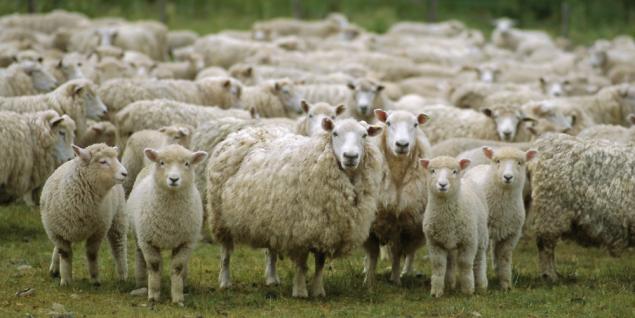
Many manufacturers use a mixture of wool and synthetics, which makes it easier to care for the jacket and allows you to wash it in washing machine. In this case, the percentage of wool - “wool” - and synthetic filler - “polyester” will be written on the label.
In order for the thing to retain its appearance and retain heat in the future, it should be washed at a temperature not exceeding 30 °, and the most suitable washing mode would be “Wool”. If there is no such mode, a delicate wash with a minimum spin speed and a mandatory additional rinse will do.
Synthetic fillers
The word "polyester" is symbol for any synthetic filler, because they are all made of polyester fibers. Some manufacturers do not specify the specific type of filler on the labels. When thinking about buying, ask a consultant in the store for details or look for information about the technologies for the production of jackets from this brand on the Internet.
Bio-down has been used since the 70s of the last century and is used for tailoring jackets designed for extreme weather conditions. On average, jackets filled with bio-down are designed for cold temperatures down to -40 °. Being an eco-friendly filler, it is soft and fluffy, resistant to wind and other external influences. Bio-fluff is light and voluminous, it is perfectly washable at home and does not roll into lumps. Artificial swan down is made from a new generation of microfiber. This material is not inferior in quality to natural fluff. The main advantages of artificial swan down are hypoallergenicity, softness, lightness and ease of use. It is remarkably washable and dries faster than natural fluff. Having bought a jacket with such a filler, you will feel comfortable even in severe frosts. Syntepuh has the same characteristics.
Thinsulate is a super thin fiber developed by 3M. This material has been successfully used for 40 years, including for tailoring clothes for astronauts. It is believed that thinsulate is one and a half times warmer than natural fluff. And it also perfectly retains its shape, has high water-repellent properties and dries quickly after washing.
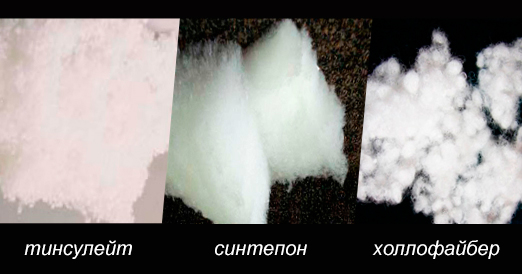
Isosoft is also widely used - a Belgian insulation that is used for sewing adult and children's clothing and is designed for temperatures up to -40 °. Holofiber, polyfiber, fibertek and fiberskin fillers are united by one technology: they consist of ergonomic balls, spirals or springs, between which there are specially left gaps. This guarantees exceptional warmth and wearability of products with such fillers. Another plus - the cost of the jacket will be low.
Valterm is an Italian insulation with a honeycomb structure: it consists of many small cells and perfectly removes moisture. If you want to buy a jacket for winter sports, pay attention to this filler. It also removes moisture well and the primaloft insulation, which is used when sewing clothes for the US Army.
Membrane insulating down jackets
In the manufacture of sports and tourist jackets, membrane technology is used. The membrane - a thin film of special materials - is placed on the inside of the jacket if its purpose is to retain heat and remove moisture. How it works: snow and rain from the outside do not penetrate through the membrane cells, as they are very small, and the evaporation from the skin easily escapes through these channels. This guarantees comfort and dryness of the body.
There is also a membrane spraying, in which the outer side of the jacket is treated with a water-repellent composition.
Caring for membrane jackets is easy. You will need a special composition for processing fabric with a membrane and a detergent recommended by the manufacturer for washing such jackets.
Men's and women's down jackets
Winter jackets for men are more often than women's, sewn using modern synthetic fiber as a filler. Men sweat more than women, so the issue of moisture removal is very relevant. For women, not only production technology is important, but also design, so many of the fair sex are guided, first of all, by the appearance of a jacket or coat. Now buy a beautiful and warm jacket It's easy, the main thing is to carefully study the label.
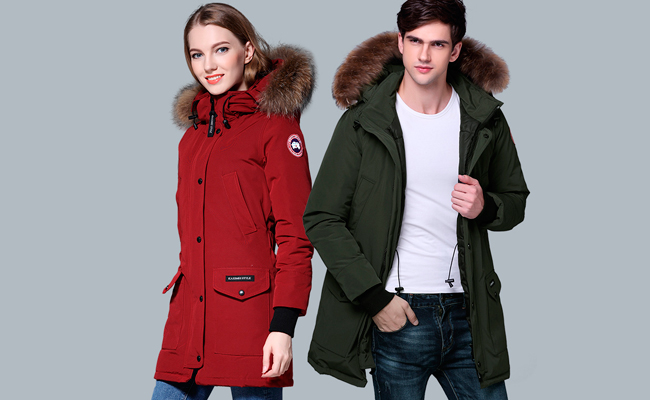
On the women's jackets fur trims, embroidery and other decorations are more common. However, men's jackets, designed for harsh conditions, most often also have fur on the hood to protect the face from wind and snow.
Children's jackets
When choosing a filler for a children's down jacket, pay attention to the hypoallergenicity and lightness of the materials. The jacket should not constrain the child's movements. If the kid is fond of winter sports, give preference to technologically advanced synthetic fillers. Natural down is better for relaxing walks in the park and is guaranteed to be a suitable option if the child is still small and travels in a stroller.
Pay attention to the manufacturer's recommendations. So, some children's jackets at a temperature not lower than -5 ° are advised to wear a thin jacket. In a sweater and jacket, the child may sweat, which is fraught with the development of colds. It is better to buy two children's winter jackets - an ultra-thin down jacket for moderate cold weather and a technological jacket for severe frosts.
What is the difference between autumn and winter down jackets
When choosing a jacket for autumn, pay attention to the following points:
- the down jacket should be single-layer - it will be hot in a two-layer
- fluff can be less than 70% - in the autumn season it will only be on hand
- a down-free membrane jacket is a suitable autumn option, especially if you prefer active leisure
As a winter jacket, a two-layer down jacket with a down content of at least 75% is perfect. Synthetic insulation with suitable temperature characteristics is also good for cold weather. Sometimes manufacturers combine natural or synthetic fillers with a membrane - such jackets are especially good for those who spend a lot of time outdoors. If you move exclusively between home, car and work, it is not necessary to choose the warmest jacket. Assess the degree of your activity and decide which filler is best for you.
